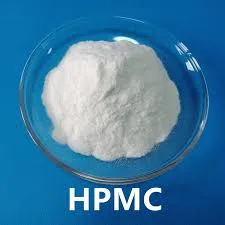
Oct . 11, 2024 01:26 Back to list
hydroxyethyl cellulose powder
Understanding Hydroxyethyl Cellulose Powder Properties and Applications
Hydroxyethyl cellulose (HEC) is a water-soluble, non-ionic polymer derived from cellulose, a natural polymer that is abundant in plant materials. HEC is formed through the etherification of cellulose with ethylene oxide, and its unique properties have made it a valuable ingredient in a multitude of industries, including cosmetics, pharmaceuticals, food, and construction.
Properties of Hydroxyethyl Cellulose Powder
One of the most notable characteristics of HEC is its ability to dissolve in water, forming a clear and viscous solution. This property makes it an excellent thickening agent, which is particularly useful in formulating gels, creams, and lotions in the cosmetic and personal care industry. HEC exhibits pseudo-plastic behavior, meaning its viscosity decreases under shear stress, which makes it easier to apply products containing HEC.
Another significant feature of HEC is its thermal stability. Unlike some other thickening agents, HEC maintains its viscosity even when subjected to high temperatures, making it suitable for various hot-fill applications. Moreover, HEC is resistant to electrolytes, allowing it to maintain its properties in saline or ionic environments, which is particularly beneficial in products such as pharmaceuticals and personal care formulations.
HEC is also known for its excellent film-forming properties. When dried, it can create a flexible, durable film, which is particularly advantageous in coatings and adhesive formulations. This property extends HEC's usefulness beyond traditional applications, leading to its incorporation into the construction industry as a component in cement and mortar mixtures.
Applications of Hydroxyethyl Cellulose Powder
hydroxyethyl cellulose powder

In the cosmetics sector, HEC is widely utilized as a thickener and stabilizer in various products such as shampoos, conditioners, creams, lotions, and makeup formulations. It helps improve the texture and flow of these products, ensuring that they are easy to apply and comfortable to wear.
In pharmaceuticals, HEC is often used as a binder in tablet formulations and as a component in controlled-release drug delivery systems. Its capacity to form gels also makes it suitable for creating topical formulations, such as ointments and gels for treating skin conditions.
The food industry also leverages the properties of HEC, where it is used as a thickening and stabilizing agent in various food products, including sauces, dressings, and desserts. Its ability to enhance the mouthfeel and texture of these products is invaluable, providing a sensory experience that consumers appreciate.
In construction, HEC acts as a thickener and stabilizer in cement and mortar mixtures. Its water-retention properties help improve the workability of these materials, ensuring that they remain workable for longer periods and adhere better to surfaces.
Conclusion
Hydroxyethyl cellulose powder stands out as a versatile and essential ingredient across numerous industries. Its unique properties, including thickening, stability under heat and ionic conditions, and film-forming capabilities, allow it to fulfill a variety of functions. As consumers demand more from the products they use, HEC holds great potential in advancing formulations in cosmetics, pharmaceuticals, food, and construction, highlighting its importance in modern product development. Whether it’s enhancing texture, stability, or effectiveness, hydroxyethyl cellulose continues to be a pivotal component in creating innovative solutions across diverse applications.
-
tile-bonding-additives-for-stronger-bonds
NewsAug.22,2025
-
construction-grade-rdp-for-wholesale-needs
NewsAug.22,2025
-
trusted-wholesale-hec-partners
NewsAug.22,2025
-
hec-solutions-for-industrial-excellence
NewsAug.22,2025
-
construction-additives-need-hpmc-essentials
NewsAug.22,2025
-
hpmc-versatile-cellulose-ether-for-industries
NewsAug.22,2025







